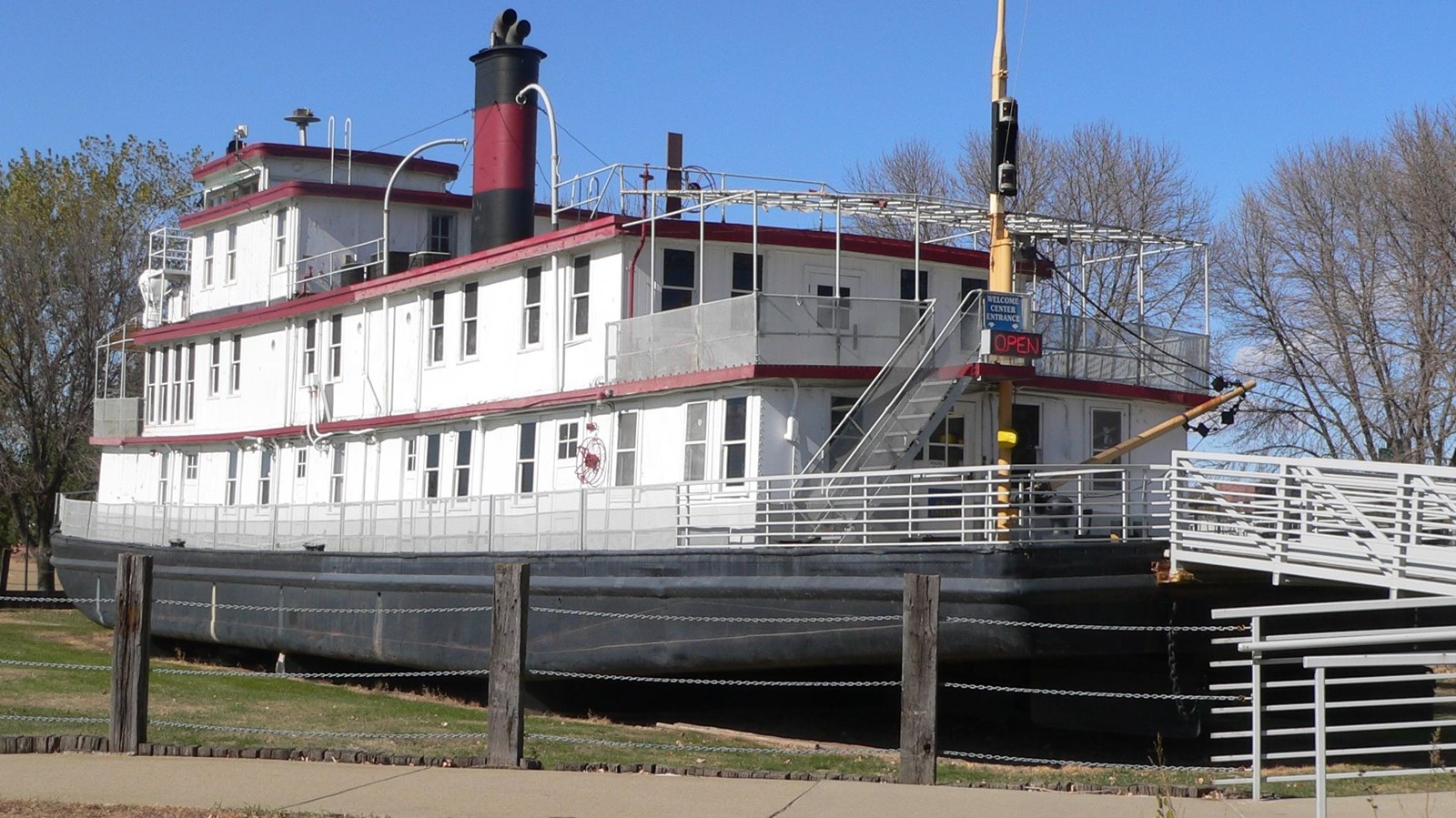Last updated: May 18, 2021
Place
Sergeant Floyd River Museum & Welcome Center

"File:Sergeant Floyd towboat 1.jpg" by Ammodramus is marked with CC0 1.0
Accessible Rooms, Accessible Sites, Baby Changing Station, Benches/Seating, Bicycle - Rack, Captioned Media, Cellular Signal, Electrical Outlet/Cell Phone Charging, Elevator, Fire Extinguisher, First Aid Kit Available, Food/Drink - Snacks, Gifts/Souvenirs/Books, Historical/Interpretive Information/Exhibits, Information, Information - Ranger/Staff Member Present, Internet/WiFi Available, Open Captioning, Parking - Auto, Parking - Bus/RV, Restroom, Restroom - Accessible, Telephone, Toilet - Flush, Trash/Litter Receptacles, Water - Drinking/Potable, Wheelchair Accessible
Lewis and Clark NHT Visitor Centers and Museums
This map shows a range of features associated with the Lewis and Clark National Historic Trail, which commemorates the 1803-1806 Lewis and Clark Expedition. The trail spans a large portion of the North American continent, from the Ohio River in Pittsburgh, Pennsylvania, to the mouth of the Columbia River in Oregon and Washington. The trail is comprised of the historic route of the Lewis and Clark Expedition, an auto tour route, high potential historic sites (shown in black), visitor centers (shown in orange), and pivotal places (shown in green). These features can be selected on the map to reveal additional information. Also shown is a base map displaying state boundaries, cities, rivers, and highways. The map conveys how a significant area of the North American continent was traversed by the Lewis and Clark Expedition and indicates the many places where visitors can learn about their journey and experience the landscape through which they traveled.
In Sioux City, Iowa, near the intersection of South Dakota, Nebraska, and Iowa, stands the Sergeant Floyd River Museum and Welcome Center. The museum is nestled inside the retired M.V. Sergeant Floyd, a boat once used by the United States Army Corps of Engineers. The boat was named after Sergeant Charles Floyd of Kentucky, one of the members of the Lewis and Clark expedition.
Floyd joined the expedition on August 1st, 1803. He was described as a “man of much merit” by William Clark and was likely chosen for the Corps of Discovery because of the close relationship between the Floyd and Clark families. Sergeant Floyd tragically died, likely of a ruptured appendix, on August 20th, 1804 in present-day Sioux City, Iowa, making him the only member of the Lewis and Clark expedition to die on the journey. The M.V. Sergeant Floyd was created over a century later, keeping the memory of the fallen sergeant alive.
The M.V. Sergeant Floyd was deployed in 1932 in Jeffersonville, Indiana. The boat was mostly utilized by the Corps of Engineers for menial work, such as water inspection and towing. She was used until 1975, at which point she became a moving exhibit for the Army Corps of Engineers to celebrate their Bicentennial. M.V. Sergeant Floyd functioned as an exhibit for 18 months, before finally being decommissioned. After her decommissioning, the boat was moved around and considered for various uses before she finally became the museum she is today.
The museum currently offers free admission to its various exhibits covering the history of transportation on the Missouri River and the Lewis and Clark expedition. The restored third level of M.V. Sergeant Floyd’s Motor Vessel is available for visitor viewing.
For more information about the Sergeant Floyd River Museum and Welcome Center, call (712) 279-0198
